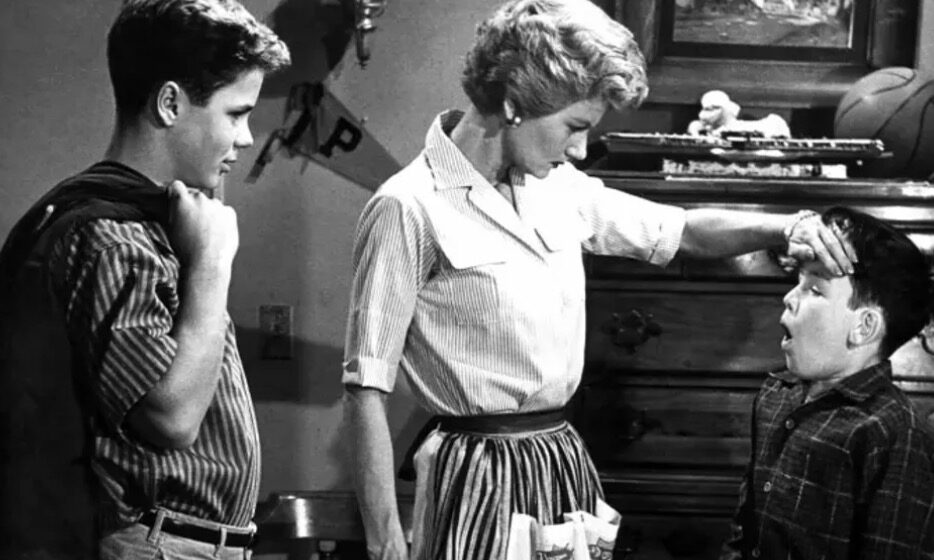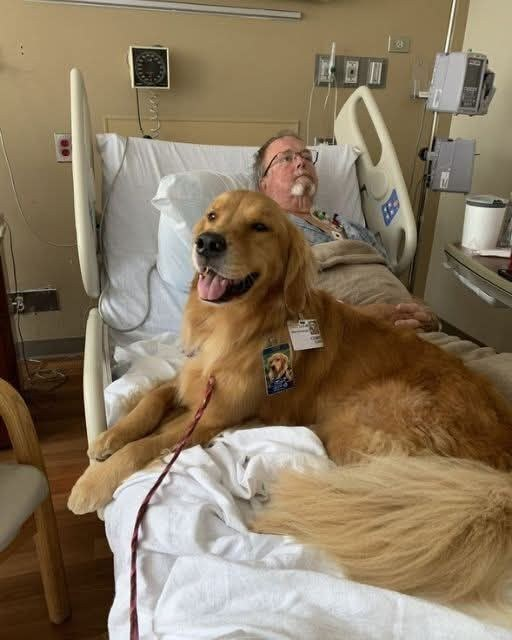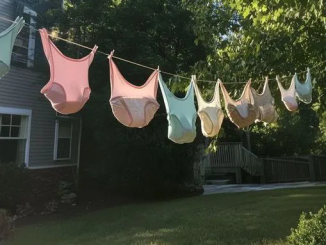
If only the world was more like this the show Leave It to beaver, the world would be a much better place.
However, even the sun has its spots, and Leave It to Beaver was not without its share of mistakes and lesser-known quirks behind the scenes.
Set a higher standard
Despite being centered around a fictional family, Leave It to Beaver set a higher standard of wholesome decency for Americans, contrasting sharply with other television programs that have progressively declined in quality since its airing.
The beloved American television sitcom captured the hearts of audiences during its original run from 1957 to 1963, becoming iconic for its portrayal of idyllic family values and wholesome humor.

To put it simple, the series was very well-written and funny as hell.
But now, let’s take a look at some hilarious moments that weren’t meant to make it on screen — what we call bloopers or goofs. There’s one particular scene that really surprised me; a scene that wasn’t edited out and features an unexpected blooper.
June Cleaver’s calendar
One well-known mistake, which I had never heard about until now, involves June Cleaver’s calendar. Over the years, the Cleaver household has been presented as the quintessential example of good housekeeping.
Every organized and well-planned home, of course, has a calendar to keep track of important dates. June Cleaver certainly had her calendar, but it seems they forgot to update the one hanging on the wall of the Cleaver home.

For those with sharp eyes, you can spot that June Cleaver’s calendar displayed incorrect dates in the episode The Poor Loser, from 1963. In fact, the show likely used a calendar from 1961.
In the same episode, Ward and Beaver are set to go watch a baseball game. During a close-up of the tickets, there’s a noticeable error: “Mayfield” is misspelled as “Mayfied” in the smaller print, even though it’s spelled correctly in the large print.
The fake bee
In earlier times, special effects were far from the efficient technology we have today, and filmmakers had to rely on more analog methods. For those of you who remember the episode The Silent Treatment, you might recall a scene where Beaver is painting a door and a bee suddenly takes an interest in him.
Naturally, using real bees posed significant challenges, so the production team resorted to a fake bee hovering on a string. If you look closely, you can clearly see the string bouncing around Beaver’s face!
“I got in a lot less trouble”
Jerry Mathers portrayed Theodore “Beaver” Cleaver and quickly became everyone’s favorite kid brother. The actor, who celebrated his 76th birthday in 2024, remains alive and well.
He has also been asked whether his off-screen personality mirrored any aspects of Beaver’s character.
“Well, I got in a lot less trouble,” he laughed. “But then again, I had a lot of people watching me all the time. Because when I was due doing the show, there were about 60 men and probably eight or nine women on the show these were lighting people and all the different things that they have to do to make a series. Between takes, when I wasn’t doing things, they would come out and we’d play — throw footballs, throw baseballs. It was like an extended family. There was a whole bunch of people, and they wanted me not to say, ‘I don’t want to be here anymore.’”
Jerry Mathers’ infamous audition
When it comes to Jerry Mathers, one can’t help but mention his infamous audition for the role of Beaver. He made quite the impression — let’s just say it was memorable.
“I came dressed in a Cub Scout uniform, so that should have been a big clue,” Mathers recalled.
The young boy was supposed to head to his Cub Scouts meeting right after the audition, and he wasn’t particularly enthusiastic about being there. However,he quickly impressed the show’s creators, Joe Connolly and Bob Mosher, with his natural charm, innocence, and ability to deliver lines authentically.

Mathers candidly expressed his concerns about missing his Cub Scouts meeting, which only added to his charm. The producers found his honesty refreshing and knew immediately that he was the perfect choice for the role.
Ironically, there wasn’t much time for scouting for Mathers after he landed the role of Theodore.
“We had to go to school for three hours a day, and it could be chopped up, because we’d go out and if they’d shoot the original, the long shot, and then we’d do closeups. You were jumping in and out of school all the time, and you’d come back 20 minutes later and you study for maybe another 40 minutes, and then you have to do another scene or whatever,” Jerry explained.
Negotiating genius
Jimmy Mathers was a trailblazer in more ways than one; he became the first child actor to negotiate a deal that entitled him to a slice of the merchandising pie from a TV show. Talk about smart business moves!
This savvy decision turned out to be quite the cash cow, as Leave It to Beaver continues to rake in revenue more than 60 years after its original run. Who knew that a show about a kid in a striped shirt and his misadventures could keep making money long after the final credits rolled?
Tony Dow was not the original Wally
Actor Tony Dow is best known for his role as Wally Cleaver, the quintessential All-American older brother to Theodore “Beaver” Cleaver and son of Ward and June Cleaver.
In the beloved series Leave It to Beaver, Wally navigates the ups and downs of teenage life, tackling relatable issues like dating while offering guidance to his more mischievous younger brother, Beaver.

Dow’s portrayal of Wally was nothing short of iconic; his charm, warmth, and relatable persona helped make Wally a household name. But did you know he wasn’t the first actor cast in the role?
The pilot episode originally featured Paul Sullivan as Wally Cleaver, but he was replaced because a sudden growth spurt made him appear too old for the role.
June Cleaver’s hidden scar
Barbara Billingsley, best known for her role as June Cleaver, will forever be remembered for vacuuming the Cleaver living room while impeccably dressed in high heels and pearls.
Her portrayal of parenting was characterized by calmness and respect, setting a new standard for family-oriented sit-coms.

However, there’s more to June’s trademark look than meets the eye. The actress wore her iconic pearls to conceal a surgical scar at the base of her neck that she preferred to keep hidden. As for the high heels, they were a practical choice to maintain height parity with her growing sons.
Did Jerry Mathers and Tony Dow get along?
Studying photos from the Leave It to Beaver set reveals the undeniable bond between Tony Dow and Jerry Mathers.
”Wally is the perfect big brother,” Jerry Mathers said in a 2006 interview with the Television Academy Foundation.
“He’s the champion basketball player, football player. He does everything right. He’s a huge letterman. He gets A’s on all his papers. Everyone loves him.”

Their connection shined through in their eyes and body language, showcasing the genuine emotions that made their characters resonate so deeply. It’s hard to portray such strong sibling dynamics without real feelings behind them.
For those curious, Tony and Jerry truly became best friends during filming and maintained that lifelong friendship.
Following Dow’s passing in 2022, Mathers expressed his grief, saying, ”He was not only my brother on TV, but in many ways in life as well. Tony leaves an empty space in my heart that won’t be filled.”
Jerry Mathers was not killed in Vietnam
Did you know that Jerry Mathers was once rumored to have died in Vietnam? Thankfully, that was just a false report.
The young actor was never in Vietnam. Although he attempted to enlist in the Marines, he was turned down due to concerns that sending him overseas could lead to negative publicity if anything happened to him. Instead, Mathers enlisted in the Air National Guard, where he spent his service time in the United States.
The most expensive episode
One of the most legendary episodes of Leave It to Beaver aired on May 5, 1961. In a memorable scene, Beaver climbs up to prove that there’s no soup in a giant cup on a billboard but accidentally falls in.
This particular episode had a production cost of $40,000, making it the most expensive of the entire series. It also became one of Jerry Mathers’ most memorable episode, as he struggled with a fear of heights.
Toilet on screen
Leave It to Beaver was groundbreaking in many ways. One of the show’s unique aspects was its focus on the children’s perspective, which allowed viewers to connect with the characters on a deeper level. Another significant feature was its ability to highlight everyday aspects of family life.
This was notably exemplified in an episode where Wally carries a toilet seat, marking a pivotal moment in television history.

Even if only the tank was visible, it was among the earliest programs to showcase a bathroom in any form. In the 1950s, networks were extremely hesitant to display bathrooms on television, let alone an actual toilet.
The first episode almost never made it on air
The first episode of Leave it to Beaver was banned from airing due to its content involving an alligator and the portrayal of a bathroom, which was not allowed on television at the time.
In the very first episode, Wally and the Beaver decide to buy a pet alligator. Jerry Mathers recalled, “We were going to put it in the toilet because we knew alligators needed water. At that time, you not only couldn’t show a toilet, but you also couldn’t show a bathroom on television. It was prohibited.”
The show’s producers battled with censors to include the bathroom scene, ultimately reaching a compromise to only show the back of the toilet tank. “That was a way that Leave It to Beaver actually set some precedents for the television industry: We were the first show to depict a bathroom,” Mathers explained, talking with Fox News.
No laughing policy
The show’s creators sought a gentle comedic tone, they preferred elicit chuckles rather than uproarious laughter.
This intentional choice played a significant role in shaping the show’s unique atmosphere, fostering a warm, family-friendly environment.
The producers believed comedy should stem naturally from the characters and their interactions, avoiding exaggerated jokes or over-the-top humor. As Tony Dow put it: “If any line got too much of a laugh, they’d cut it.”
As we wrap up our dive into the delightful world of Leave It to Beaver, it’s clear that this classic sitcom was more than just a reflection of family life in the ’50s and ’60s — it was a treasure trove of laughter, quirks, and unforgettable bloopers.
So, next time you settle in to watch an episode of Leave It to Beaver, remember to keep an eye out for those little moments, After all, who doesn’t love a good blooper? Here’s to the laughs, the memories, and the timeless charm of Leave It to Beaver! Feel free to share your favorite bloopers and funny facts with us on social media — we’d love to hear what made you chuckle!
The Therapy Dog Jumped on His Bed — and Then He Finally Found His Voice

But what he said next… none of us were prepared for.
“Marigold…” The word slipped out like a forgotten melody, fragile but clear.
“Marigold?” I repeated softly, unsure if I’d heard correctly.Mr. Callahan turned his head slightly toward me, his cloudy blue eyes flickering with something that resembled recognition. “She used to bring me flowers every Sunday. Marigolds. Said they matched my hair when I was young.” A faint smile played on his lips as he scratched behind Riley’s ears absentmindedly. “She always brought them, even after…” His voice trailed off, leaving the sentence unfinished, heavy with unspoken memories.
The nurse beside me shifted uncomfortably. She leaned in closer to whisper, “He hasn’t mentioned anyone by name in months. Not since…” Her voice faltered, and she didn’t finish her thought either.
Riley tilted his head, sensing the change in energy, and let out a soft whine. It seemed to snap Mr. Callahan back to the present. He patted Riley’s side lightly before looking at me again. “You remind me of her,” he said suddenly, surprising both of us. “The way you look at your dog. She had a way with animals too.”
My throat tightened. I wasn’t sure how to respond, so I just smiled warmly and asked, “Who was she?”
For the first time since we entered the room, Mr. Callahan sat up a little straighter. His gaze softened as though he were peering through decades of memory. “Her name was Eleanor. We grew up together in a small town nobody’s ever heard of. She was the only person who believed I could do anything worthwhile with my life.” He paused, his fingers brushing against Riley’s fur absently. “We got married right out of high school. Everyone thought we were crazy—young kids tying themselves down—but it worked. For fifty years, it worked.”
His words hung in the air, thick with nostalgia and longing. But there was also an undercurrent of pain, a shadow lurking beneath the surface of his story. Something about his tone told me this wasn’t going to end happily.
“What happened?” I asked quietly, bracing myself for whatever came next.
His face darkened, and for a moment, I wondered if he’d retreat back into silence. Instead, he sighed deeply, the weight of years pressing down on him. “Eleanor passed away two years ago. Cancer. They said it was quick, but it didn’t feel that way to me. Watching someone you love waste away… it takes longer than you think.” He swallowed hard, his hands trembling slightly. “After she was gone, everything felt empty. I stopped talking. Stopped eating. Stopped caring. Even the marigolds in our garden died because I couldn’t bring myself to water them anymore.”A lump formed in my throat. I glanced at the nurse, whose eyes were glistening with tears. This was more than just a patient reconnecting with the world—it was a man rediscovering pieces of himself he’d buried along with his wife.
Riley must have sensed the shift too because he nudged Mr. Callahan’s arm, drawing his attention back to the present. The old man chuckled weakly, scratching Riley’s neck. “You’re persistent, aren’t you? Just like Eleanor used to be.”
That’s when it hit me—the twist no one saw coming. Maybe it wasn’t just coincidence that Riley had sparked this breakthrough. Dogs have a way of connecting people to their deepest emotions, bridging gaps we don’t even realize exist. And maybe, just maybe, Riley wasn’t here by chance.
As if reading my thoughts, Mr. Callahan added, “You know, Eleanor always wanted a dog, but we never had space for one. She would’ve loved him.” He gestured toward Riley, who wagged his tail enthusiastically. “Maybe she sent him to find me.”The room fell silent except for the rhythmic ticking of the clock on the wall. It wasn’t a religious statement or a supernatural claim—it was simply a man finding comfort in the idea that love transcends even death. That somehow, somewhere, Eleanor was still looking out for him.
Before I could respond, Mr. Callahan surprised me once more. “Can you take me outside? I haven’t been out in weeks.” His voice carried a mix of determination and vulnerability, like a child asking permission for something they desperately needed.
I exchanged a glance with the nurse, who nodded approvingly. “Of course,” I said, helping him sit up fully. With Riley leading the way, we slowly made our way to the hospital courtyard. The sun was setting, painting the sky in hues of orange and pink. Mr. Callahan took it all in, his eyes wide with wonder, as though seeing the world anew.
When we reached a bench surrounded by flower beds, he stopped and pointed to a cluster of bright yellow blooms. “Marigolds,” he said softly, his voice cracking. “They planted marigolds here.”Without another word, he sat down, leaning forward to touch the petals. Tears streamed down his face, but they weren’t tears of sadness—they were tears of gratitude, of remembrance, of love renewed.
Later that evening, as I tucked Riley into his bed at home, I reflected on what had happened. It wasn’t just about Mr. Callahan speaking again; it was about connection. About how even in our darkest moments, there’s always a thread pulling us back toward light—if we’re willing to follow it.
Life is full of losses, big and small. Sometimes, we lose people, dreams, or parts of ourselves. But healing doesn’t mean forgetting—it means finding new ways to carry those we’ve lost with us. Whether it’s through a memory, a flower, or a furry companion, love has a way of finding us when we need it most.
If this story touched your heart, please share it with others. Let’s spread a little hope and remind each other that even in silence, there’s always a chance to speak again.



Leave a Reply